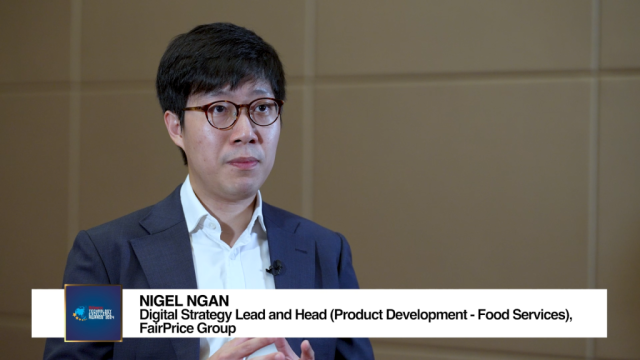
Nasty inflation to nag Asia in 1H12
Singapore and the rest of the region face pesky price jumps in oil and food.
A slew of factors from the Iran situation to a growing demand for cars is spiking up oil prices, said HSBC, and the rally will most likely bear down hard on Asia all through the latter half of the year.
Here's more from HSBC:
We've talked about it before. But we'll do it again. Oil drifting higher poses two seemingly contradictory challenges for Asia. First, it may knock down export growth to Western markets, which are far more sensitive, at least in the current environment, to swings in the price of crude. Second, it will - not now, but ultimately - push up Asian inflation. This isn't simply because of energy costs. The problem is much broader: across the region, food prices tend to rise with a lag in response to oil. And food matters hugely for regional inflation. We need crude to come down.
The cost of oil keeps drifting higher. It's easy to blame Iran. But more may be going on here: as major central banks pump up their balance sheets, the dollar wobbles and liquidity looks for a home. Moreover, Asian demand appears to be coming back, and the region is now the biggest consumer of crude. Global car sales are currently running at a record level, largely thanks to Asian drivers. Also, with Japan having shut off all but two of its 54 nuclear power plants, which in normal times provide some 30% of electricity, the country is importing coal, gas, and oil galore (by May, the remaining two will go offline as well, making for another hot summer). The crude rally may have legs.
Let's disentangle the implications for Asia. At the surface, the effects seem contradictory, but they ultimately point into the same direction: rising price pressures over the second half of this year. Inflation, in short, will again become Asia's biggest headache in a few short months.
Take a step back. Higher oil prices present a risk to Western demand. In Euros, the price of Brent hovers near its record high, prompting the ECB only last week to raise its forecast for inflation and lower its forecast for growth. In the US, gasoline also poses a risk to demand. Certainly, as our US chief economist, Kevin Logan, notes, things are not quite as dire as last year, not least because of a more robust labour market and offsetting factors, such as lower prices for natural gas. Still, at the margin, rising crude prices are a clear headwind for the US economy.
This means that exports to the West will continue to struggle. Recent data shows a slight upturn in regional shipments, especially among smaller exporters, which may in part reflect an easing inventory adjustment and the fading of the Thai flood disruptions. But China's disappointing numbers for February are a reminder that there is a long way to go. Risks to external demand will thus keep Asian policy-makers defensive for the time being.
Rising oil costs have a much broader effect on inflation in Asia than in advanced markets. For one, local demand is less sensitive, not least because consumers, enjoying healthy income gains, take rising prices in their stride. In addition, the lesson of the last five years is that rising crude prices tend to push up the cost of food. Only think back to early 2008. Back then, global central banks had eased as well, while Asian demand continued to be robust. Food prices quickly followed oil and ultimately caused inflation to rocket. The link between food and oil is manifold, including transportation costs, fertilizer (even though it is partly linked to the price of natural gas, which has fallen), and substitution with bio-fuels.
Admittedly, most food price indices, such as the CRB agricultural measure, have shown little movement of late. But they still remain at historically elevated levels. This suggests that global demand and supply is more finely balanced than previously. A disruption, such as higher oil costs, therefore, could quickly push up food prices as well. Moreover, Asian agricultural prices react only with a lag to higher energy costs. The bias, in short, is for inflation to tick up, especially after favorable base effects start to wash out after April.
Our scenario for higher inflation depends on two assumptions. First, the rise of crude prices needs to progress gradually. A sharp spike would play such havoc with demand in advanced markets, as well as global risk appetite, that even Asian growth would come off its rails. Second, another financial road-accident in, say, Europe, would have an equally dampening effect on Asia, sparking a further round of capital outflows from the region. Barring this, with a drift higher in crude, think Asian inflation.
























 Advertise
Advertise









